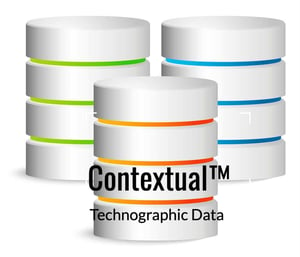Tl;dr - Many marketing teams use technographic data as part of ABM and prospect profiling and prioritization. While helpful, the data may miss important components of the software tech stack. Further, the traditional static view misses the important context of what additions/changes might be under consideration or appropriate.
 What are Technographics?
What are Technographics?
Technographics are data on the software technology that companies are using. They often compliment firmographics as part of the ideal customer profiling process for account-based marketing. Technographic data is typically collected by crawling sites to observe code, through surveys, and by modeling.
Traditionally technographics are used as a binary selector in account selection - yes/no based on the software techstack - just like company size and other criteria.
It's a very static approach which doesn't help with nuanced messaging or sales approaches, and typically overlooks critical issues of timing.
How Does Contextual™ Technographic Data Change That?
Contextual Technographics is different in two significant ways.
First, it's harvested in an innovative way - both by crawling website tags AND by crawling job descriptions. Competitive marketers have relied on competitors job postings for years as one of the richest sources of insights into current and future priorities and other proprietary info. (Intrigued? Here's a great post by Ellie Mirman on the Marketing AI Institute blog.)
That allows us to identify backend and operational components of the software tech stack which can't be identified by tags and likely wouldn't be divulged in surveys.
Second, it creates important connections between what is - a simple binary yes/no for certain logos or categories - and what possibly will be - intent data signals indicating that an individual, working on behalf of an account, is likely engaged in research into some problem/solution/product/service.
That enables marketing to target messaging in a particularly timely and appropriate way, and it provides sales powerful insights into how to engage with contacts and an account's entire buying team.
Creating New Marketing and Sales Movements
Examples of playbooks which can be built on this combination of insights include:
- Renewal disruption
- Knockout
- Product launch
- Market research
- Related tech
Of course the ingenuity and creativity of revenue growth teams working under aggressive KPIs and demanding quotas, and within brutally competitive markets spawn many other use cases.
How would you put this combination to work in your marketing data stack and revenue growth movements?




